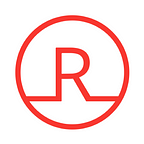How to predict the patient loyalty in a clinic
Sergey Rykov
CTO, Robomed Network
Forbes Conference
May 30, 2018, Moscow, Russia
We would like now to share our data processing experience for predicting patient return to the clinic and the loyalty growth. Robomed system was initially focused on business processes automation in our “Open Clinic” network.
As time went by, we now have 20 clinics connected and the progress keeps going on. Within last three years, we learned out that all how to handle the business processes occurring in clinics and found out the most subtle places there.
It’s a matter of a fact — the clinics that originally came to us were either in the Stone Age period, or used the information systems that could only serve the simplest options. I.e. they could have a huge set of buttons, which looked interesting but could only complicate the work.
Our solution is mainly focused on simplifying and visualizing making it as easy and effectively as possible.
The question of how to predict the patient’s return is complex and multifaceted. And consists of many components.
However, in any case, it starts with how people get into the clinic, how they see it, how they interact with the staff and how the work of the staff within the clinic is organized.
The client’s impression of the clinic begins directly from the threshold and continues with the professionalism of the staff. Any of these parts is very important.
At any time, a bad impression from the clinic can occur, therefore, our task is to understand and track those moments.
We now currently look at a good clinic as an IT company. At any stage while the patient interacts with the clinic, personnel proceeds working with external laboratories to obtain an accurate analysis, anything else required — all this is real working IT system constantly with all people inside constantly interacting with each other and generating a huge amount of information.
Unfortunately, with obsolete systems, this information is often lost. The information necessary for the generation of these processes is made in the clinic, but in case we look closer — it is lost.
Accordingly, our task for the prediction of the return of the patient to the clinic is visualization of all these internal processes, to find frequent mistakes and to make improvements.
To solve this issue, we took part in three hakatons. This are the specialized events where teams of different specialists meet. For example, in medicine (doctors) or data scientists (specialists in machine learning). We gave them our data and set certain tasks. Our goal was to find suitable teams and points of internal growth.
We got interesting results. The main one was that we found several teams with which further cooperation continued and now several services are already at the stage of introduction into our company.
We will tell you more about these services.
We found out that there are certain groups of doctors with their loyal patients, separated, for example, by age or other special parameters, in which the probability of coming to a repeated appointment is greater.
Our model has shown, by what principle to break the doctors’ dissipation. On the one hand, we found subtle places in the work of the doctors themselves. With the second — it allows us to already at the entrance to the clinic to offer the patient the doctor with whom he will have the greatest chance of working together. Due to this, we are increasing LTV in the long term. This is one of the many services that you are now our company at the stage of integration.
Another aspect is the help of the system to the doctor himself during the reception with writing, for example, anamnesis, patient complaints and other things. Based on the trained model the system tells the doctor the protocols of the diseases.
For example, in neurology, the accuracy of our model is 92%. That is a really good result. It raises both the level of care, and motivates our patient, as it raises the level of correctness of the diagnosis.
Another example is the generation of data while work with the patient. In other words, let us imagine the clinic as a kind of factory with a huge number of internal conveyors and hundreds of thousands of services, in which a huge number of personnel take part. This is a complicated process for both digitization and visualization.
Some of these results are thrilling. For example, in many clinics, the time of admission of the patient is observed. At the same time, practice shows that patients with serious injuries are very pleased when the doctor gives them more time allotted. Moreover, due to this they become much more loyal to both the doctor and the clinic.
If we have a look at the experience — while 20 years passed almost all clinics dealt with securities, 10 years ago, primary automation began, albeit on antediluvian complex systems, which, in fact, did not benefit with nothing more than the data absorption.
Our clients come to us for an individual flexible solution, transparent and visualized information they will understand easily. Most of the currently existing medical systems developed in the early 2000s are absolutely not mobile and flexible, so our task was to analyze those data, to make our customer interested for the return to our clinic for getting his individual approach, our qualified assistance and his happiness.
